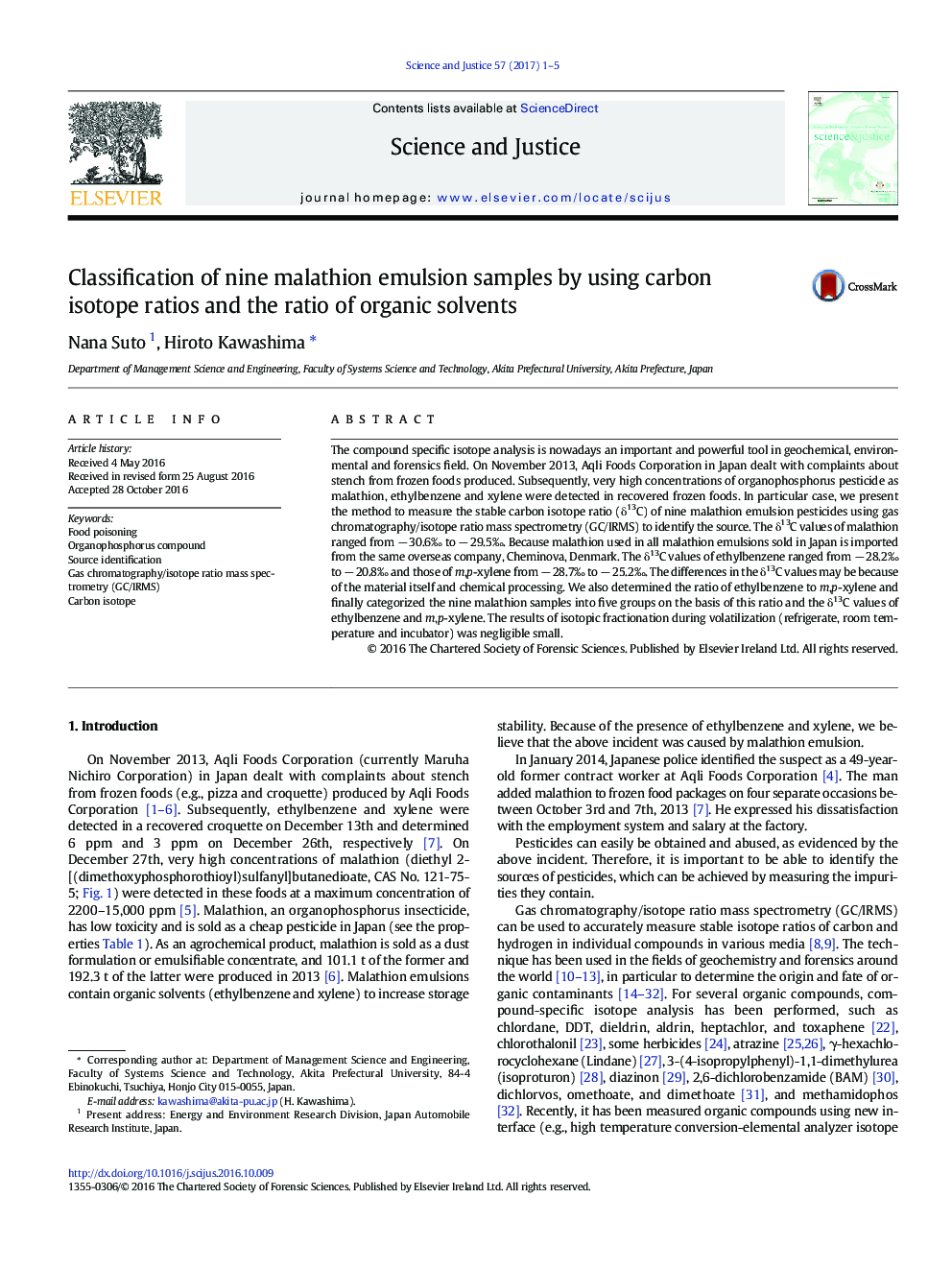| کد مقاله | کد نشریه | سال انتشار | مقاله انگلیسی | نسخه تمام متن |
|---|---|---|---|---|
| 6463352 | 1362098 | 2017 | 5 صفحه PDF | دانلود رایگان |
- The carbon isotope ratio of nine malathion emulsion samples for pesticide were analyzed.
- The differences in the δ13C values of malathion between nine samples were within 1Ⱐand were not significant.
- The δ13C and ratio results of ethylbenzene and m,p-xylene for malathion emulsion samples can be categorized 5 groups.
The compound specific isotope analysis is nowadays an important and powerful tool in geochemical, environmental and forensics field. On November 2013, Aqli Foods Corporation in Japan dealt with complaints about stench from frozen foods produced. Subsequently, very high concentrations of organophosphorus pesticide as malathion, ethylbenzene and xylene were detected in recovered frozen foods. In particular case, we present the method to measure the stable carbon isotope ratio (δ13C) of nine malathion emulsion pesticides using gas chromatography/isotope ratio mass spectrometry (GC/IRMS) to identify the source. The δ13C values of malathion ranged from â 30.6â° to â 29.5â°. Because malathion used in all malathion emulsions sold in Japan is imported from the same overseas company, Cheminova, Denmark. The δ13C values of ethylbenzene ranged from â 28.2â° to â 20.8â° and those of m,p-xylene from â 28.7â° to â 25.2â°. The differences in the δ13C values may be because of the material itself and chemical processing. We also determined the ratio of ethylbenzene to m,p-xylene and finally categorized the nine malathion samples into five groups on the basis of this ratio and the δ13C values of ethylbenzene and m,p-xylene. The results of isotopic fractionation during volatilization (refrigerate, room temperature and incubator) was negligible small.
Journal: Science & Justice - Volume 57, Issue 1, January 2017, Pages 1-5
